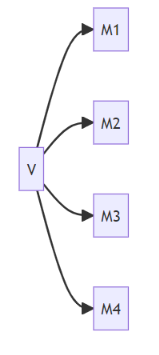Write Modern Code with Features of C++17 and C++20 -- Andreas Fertig
 When you transition from older C++ standards like C++11 or C++14 to the latest C++17 and C++20 it can be a tough journey. It's essential for writing clean and easy-to-maintain code, but many developers find the process challenging.
When you transition from older C++ standards like C++11 or C++14 to the latest C++17 and C++20 it can be a tough journey. It's essential for writing clean and easy-to-maintain code, but many developers find the process challenging.
Write Modern Code with Features of C++17 and C++20
by Andreas Fertig
From the article:
Here are three common hurdles:
1. Variety of New Features
Adapting to C++17 and C++20 can be intimidating. As the latest standards offer a wide range of new features and syntax changes. One such feature is the introduction of structured bindings in C++17, which represents a shift from how variables were traditionally declared and accessed.Old Way (C++14 and Earlier):
Before C++17, when you needed to unpack values from a pair or a tuple, you would typically do something like this:
Here, you need to use std::get<>() to access each element of the tuple, which is both verbose and less intuitive, especially when dealing with more complex data structures.


 When working with C++ standard containers and functions, handling references can sometimes lead to unexpected behavior, particularly with copy semantics. This is where
When working with C++ standard containers and functions, handling references can sometimes lead to unexpected behavior, particularly with copy semantics. This is where  When designing a circular doubly-linked list, the initial challenge is determining how to manage the construction of new nodes in relation to existing ones. While constructors seem like a natural fit for placing nodes before or after a given node, overloading them can lead to ambiguity and poor design choices. Instead, using distinct tag types or factory methods provides clearer intent, ensuring flexibility while respecting the constraints of guaranteed copy elision for node addresses.
When designing a circular doubly-linked list, the initial challenge is determining how to manage the construction of new nodes in relation to existing ones. While constructors seem like a natural fit for placing nodes before or after a given node, overloading them can lead to ambiguity and poor design choices. Instead, using distinct tag types or factory methods provides clearer intent, ensuring flexibility while respecting the constraints of guaranteed copy elision for node addresses. Previously, I tried to answer the question:
Previously, I tried to answer the question:  C++ On Sea took place in Folkestone again in February this year. Sandor Dargo shares an overview of his favourite talks and some emergent ideas.
C++ On Sea took place in Folkestone again in February this year. Sandor Dargo shares an overview of his favourite talks and some emergent ideas.